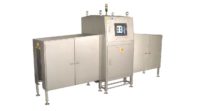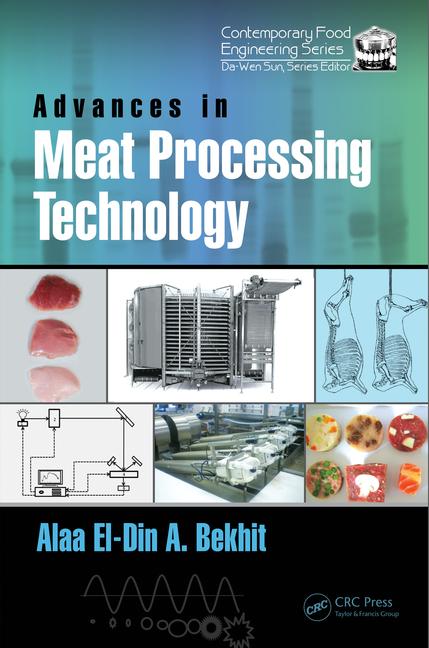How hygienic pump technology can help in a labor-stressed environment

By: Pelle “Per” Olsson
In the wake of the COVID-19 pandemic, the United States is currently experiencing a labor shortage impacting both manufacturers and consumers. From products, equipment, and supplies stranded offshore to a shortage of manpower throughout the supply chain, this is a challenging time for manufacturers. Not surprisingly, food and beverage processing plants, pet food processing plants, pharmaceutical companies, and other critical industries are also experiencing labor deficits.
This labor shortage affects industries that use hygienic pumps in several ways:
- Short-staffed facilities lack the basic manpower to operate food production lines and install, clean, maintain, and replace hygienic pumps.
- MRO (maintenance, repair, and operations) expert shortages mean that facilities lack the necessary expertise to select the proper pumps and ensure their safe and efficient operations to keep production up and running.
- Inexperienced workers lack the knowledge and experience to properly maintain and operate hygienic pumps to maintain safety and prevent downtime.
- High turnover of employees during the pandemic, caused by quarantines and illnesses, greatly affect daily operations and maintenance of hygienic pumps and the facilities themselves.
- Lack of training due to a lack of on-site expertise prevents food processing facilities from quickly ramping up production with new employees.
The Importance of Proper Pump Maintenance
Implementing effective pump maintenance is difficult enough when you have plenty of staff on hand to do the job, but it’s even more challenging when you are short-handed. Poorly maintained pumps can cause unplanned downtime, expensive repairs, and the purchase of new pumps.
Labor shortages can negatively impact pump maintenance, causing pump failure, and leading to potential for increased contamination risks, a loss of productivity, failure to comply with regulations, reduced operating profits, low worker morale, and other problems.
To help mitigate the fallout from a labor shortage, it is important plant operations to prevent problems proactively before they happen since they may lack the staffing and expertise to handle problems after they occur.
At a minimum, your periodic maintenance checklist should include a review of seals, mounting points, pressure gauges, oil levels, and pump accessories such as valves, strainers, and sight glasses.
Pump failure
To protect your products and ensure regulatory compliance, preventing pump seal failures is the primary concern. Not only can leaks cause downtime and cost your company in terms of profits, but they can also result in food contamination and other safety-related problems for your workers and consumers. This disruption could damage your reputation and your brand image, in addition to incurring regulatory agency penalties.
Pump failure has several potential causes:
- Running the pump dry: Most pump seals require lubrication to avoid excess heat and friction, eventually breaking down the mechanical seal.
- Overly gritty or abrasive product: Unless you choose an appropriate seal design, gritty or abrasive product will wear down a seal much faster than usual.
- Chemical or physical incompatibilities: Severe chemical or physical loading can reduce the life of a pump seal. The harsher the chemicals or forces acting upon the pump, the faster a seal will fail.
- Pump galling: Caused by a combination of friction and adhesion, galling leads to the slipping, and tearing of the crystalline structure beneath the surface of the seal material.
- Excessive shock and vibration: Excessive shock and vibration can cause a significant axial and radial play of the shaft, which will lead to misalignment and leakage.
- Operator error: Installing a pump incorrectly can cause the shaft to become misaligned, causing pump seal failure. Other operator errors include over-tightening fasteners, a dirty seal face, and incorrectly mounted seals.
- Harsh environments: Uncontrolled heat, drastic temperature shifts, and caustic cleaning detergents can increase seal wear. Adjusting seal chamber pressure, speed, shaft seal dimensions, the pumped medium, and the temperature around the pump can all cause damage.
- Incorrect pump design or seal choice: Choosing the wrong design or material is a major cause of pump seal failure; however, this is avoidable if you spend time upfront selecting the appropriate pump and seal combination.
Pump seal failures can also create a variety of environmental hazards if a product leaks on the floor. These risks range from causing employees to slip and fall to more serious threats like fires and explosions, depending on the substance that leaks. In a food processing plant, however, leaks can also contaminate the food product, posing a threat to consumers and causing major problems for the company in terms of litigation, fines, and more.
Staff shortages can hinder the prevention of pump failure, but you can prevent many pump seal failures by choosing the right pump in the first place. More about that later, but, first, let’s look at some ways you can prevent pump seal failures:
- Proper installation: After selecting a strong pump design, make sure you install it correctly, using the proper tools.
- Proper operation: Make sure you operate your pump per the manufacturer’s specifications. This necessary step will prolong seal life and prevent leaks.
- Proper maintenance: Don’t neglect pump maintenance, and fix any issues, including leaks, as soon as possible to avoid turning a simple repair into a major shutdown, resulting in lost productivity, safety risks, and lost revenue.
How to Select a Sanitary Pump in a Labor-Stressed Market
Even with sufficient staff, performing the necessary maintenance on your sanity pumps can be a challenge; however, meeting this challenge minimizes downtime, protects your product from contamination, mitigates safety hazards, and minimizes your Total Cost of Ownership (TCO). One of the most important things you can do to ease this challenge is select a durable, easy-to-clean pump that uses the latest technology to make maintenance as easy as possible.
Proper pump design
Choosing the right pump design for your application will prevent misalignment problems and ensure optimum operation. Design considerations also include choosing the right type of seal. Pump manufacturers can help you select the perfect pump for your needs.
Durability
Look for the most durable pump possible to reduce the chance of seal failures and leaks and avoid extra labor and high replacement costs.
Easy to disassemble and reassemble
To ease the complexity and costs of maintenance, look for a pump that was designed for ease of maintenance. For example, some AODD pumps offer enhanced clean in place (CIP) capabilities, which reduces the need for labor, helping you cope with staff shortages. If CIP isn’t an option, look for pumps designed for easy disassembly and assembly when cleaning, which also reduces the risk of lost or damaged parts. Finally, a pump that offers easier maintenance will improve safety, help you meet regulatory requirements, and avoid fines and penalties.
Selecting a pump with the fewest parts possible and that requires no tools for disassembly and reassembly reduces overall maintenance effort and eases staff training requirements, thus better supporting manufacturers during staffing shortages.
How Choosing the Right Pump Can Reduce TCO in a Labor-Stressed Market
TCO estimates all direct and indirect costs involved in acquiring and operating a product or system over its lifetime. Simply put, if you select the right pump, with easy-to-maintain technology requiring no tools for disassembly and reassembly, you will ensure lowest possible TCO. TCO is especially important in a labor-stressed environment.
A simplified TCO equation may be expressed as follows:

The initial cost is the price of the pump itself.
Operational costs include installing and testing the pump and ongoing energy costs. Maintenances costs include staff training, periodic maintenance, inspecting, cleaning, and adjusting. Downtime costs include paying employees who cannot work, lost production, and potentially lost customers. Downtime may also be caused by foreign material entering the process stream, causing the production line to shut down. Finally, the remaining value refers to how much the pump will be worth when it is eventually decommissioned (or scrapped) and replaced.
There are a variety of other maintenance and downtime factors that affect TCO. The focus for operators is to consider early on during the pump selection process how these various factors will either increase or reduce long-term TCO. These factors may include, among others, the following:
- Choosing the correct pump size and capacity so it will operate optimally
- Deciding between removable and swing arm front covers to reduce disassembly and assembly time and mitigate potential damage that increases likelihood of leakage.
- Using shorter and thicker shafts that can withstand higher speeds and pressures, minimizing wear on rotors and reducing TCO
- Replacing the rotor bolts and associated O-rings with two shim rings created out of a super-hard alloy to protect the rotor from wear
- Minimizing components in the pump to reduce replacement costs and have fewer components to ease and speed up disassembly, cleaning, and reassembly of the pump
Conclusion
Although staffing shortages remain a serious challenge for food processors, you can mitigate these problems by taking advantage of the latest hygienic pump design and technologies. Some of these technologies include a unibody design, featuring a pump body hogged out from a single piece of stainless steel that uses fewer parts, tool-less disassembly and assembly, and the option for cleaning in place to reduce the risks of losing parts during the reassembly process.
About the Author: Pelle “Per” Olsson serves as National Sales Engineer for Unibloc Pump. He has more than 15 years of experience in multiple disciplines, including food, beverage, pharmaceutical, chemicals, oil and gas, and renewable energy. Olsson has served in multiple roles at Unibloc Pump, including project engineer, QA engineer, and sales and applications engineer.
Looking for a reprint of this article?
From high-res PDFs to custom plaques, order your copy today!








